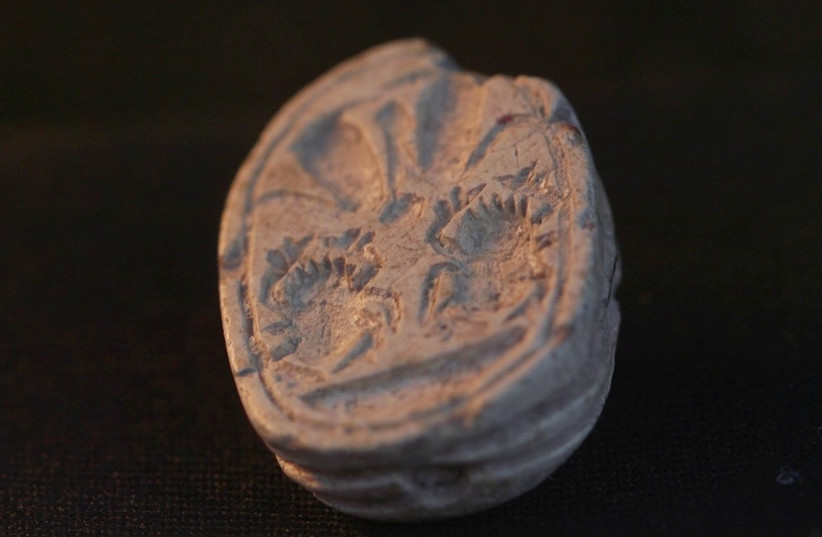Israeli Toddler uncovers 3,800-Year-Old Scarab

The young girl uncovered an ancient scarab amulet during a family trip to Tel Azeka, near Beit Shemesh.
Budding archaeologist Ziv Nitzan might have made a career for herself later in life after finding a 3,800-year-old amulet with an ancient Canaanite seal on it while on vacation with her family.
During a family trip to Tel Azeka, near Beit Shemesh, the 3-year-old girl from Moshav Ramot Meir uncovered an ancient scarab amulet.“We were walking along the path, and then Ziv bent down – and out of all the stones around her, she picked up this particular stone,” recounts Omer Nitzan, Ziv's sister.
“When she rubbed it and removed the sand from it, we saw something was different about it. I called my parents to come see the beautiful stone, and we realized we had discovered an archaeological find! We immediately reported this to the Israel Antiquities Authority.”
Her discovery did not go unappreciated by archaeological authorities. Semyon Gendler, Judah Region District Archaeologist on behalf of the Israel Antiquities Authority (IAA), awarded Ziv with an appreciation certificate for “good citizenship” and thanked the family for reporting the find.
Initially, little Ziv picked up what she thought was a stone. Instead, it was an amulet from the Middle Bronze Age. According to Dr. Daphna Ben-Tor, an expert in ancient amulets and seals, the seal was a Canaanite scarab. “Scarabs were used in this period as seals and as amulets. They were found in graves, in public buildings and in private homes. Sometimes they bear symbols and messages, that reflect religious beliefs or status,” Ben-Tor said of the discovery.
Scarab seals are tiny, ornate objects originally from ancient Egypt. They are designed in the shape of a dung beetle, which according to the IAA, had symbolic meaning. This specific type of beetle was considered sacred in ancient Egyptian society and was symbolic of new life. Researchers believe that the Egyptians saw the scarab as a symbol of the incarnation of their creator.
The discovery was found at Tel Azeka, an archaeological site near Beit Shemesh. The area shows evidence of cultural changes in the region throughout the course of history. Discoveries at the same place led by a Tel Aviv University excavation team included city walls and agricultural installations from the days of the Judahite Kingdom.
Tel Azekah was also known as a key feature in the biblical battle scene between David and Goliath, as described in the Book of Samuel (Samuel I 17:1).
Israeli Heritage Minister Amichai Eliyahu commented on the discovery. “The seal that little Ziv found during a family trip to Tel Azekah connects us to a grand story, that of the ancient civilizations that lived in this land thousands of years ago,” he said. “The scarab Ziv found also reminds us that in the Land of Israel, even children can be a part of discovering history.”
Main Image: The seal from Tel Azekah. Credit: Emil Aladjem/Israel Antiquities Authority
